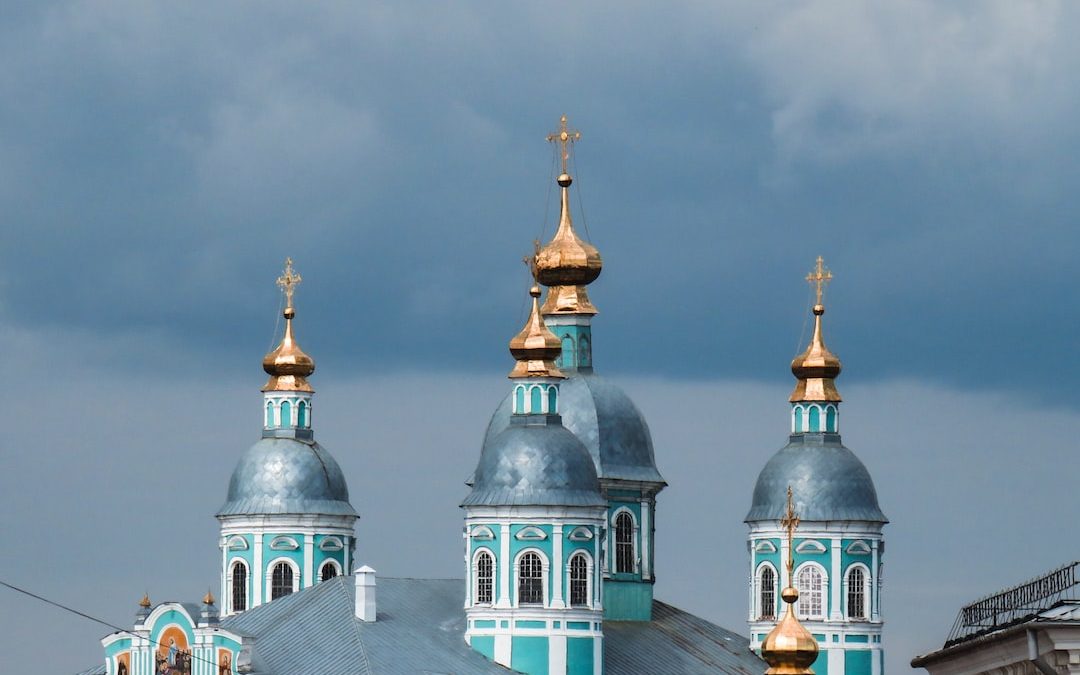Table of Contents
Exploring the Full World Heritage Sites Jobs
There are over 1,000 World Heritage Sites in the world, each with its own unique story, history, and culture. But what about the people who work to preserve and protect these sites? From archeologists to conservationists, the people behind the scenes of World Heritage Sites are invaluable to the preservation and protection of these sites.
In this post, we’re taking a closer look at some of the jobs that play an important role in preserving and protecting the world’s vast collection of World Heritage Sites. Read on to learn more about these essential jobs and the many rewards of working at a World Heritage Site.
Archaeologist
Archaeologists play a crucial role in researching and understanding the history of a World Heritage Site. They study the artifacts and remains at the site in order to uncover the site’s cultural significance and place in history. They also work to preserve and protect the artifacts and other features of the site, so that the history of the site can be properly documented and shared with future generations.
The job of an archaeologist can be both physically and mentally demanding. It requires knowledge of geography, geology, biology, and history, as well as the ability to think critically and creatively. It also requires strong problem-solving skills and a keen eye for detail, as well as the ability to work independently and with a team.
The rewards of working as an archaeologist at a World Heritage Site are immense. Not only do you get to be part of the preservation and protection of a special and important place, but you also get to uncover and share the stories and histories of the site and its people.
Conservationist
Conservationists play an equally important role in preserving and protecting World Heritage Sites. They are responsible for managing, monitoring, and maintaining the health of the site’s natural environment. This includes identifying, assessing, and mitigating potential environmental threats, as well as developing strategies for the long-term sustainability of the site.
A conservationist must have a deep understanding of the natural environment and the ability to think critically and strategically. They must also be able to work with a variety of stakeholders, including local communities and government officials, in order to ensure that the site is properly managed and preserved.
The rewards of working as a conservationist at a World Heritage Site are numerous. Not only do you get to help protect and preserve a special place, but you also get to work with local communities and help them understand the importance of the site and its environment.
Tour Guide
Tour guides play an important role in helping visitors appreciate and understand the World Heritage Site they are visiting. They must be knowledgeable about the site’s history, culture, and natural environment, and be able to provide interesting and informative information about the site. They must also be able to interact with visitors in a friendly and professional manner, and be able to manage any potential conflicts that may arise.
The job of a tour guide can be both physically and mentally demanding. It requires strong organizational and communication skills, as well as the ability to think quickly and clearly. It also requires a deep understanding of the site’s history and culture, as well as the ability to interact with people from all walks of life.
The rewards of working as a tour guide at a World Heritage Site are numerous. Not only do you get to help visitors appreciate and understand the site’s history and culture, but you also get to interact with people from all over the world and share stories about the site.
Photographer
Photographers play an important role in documenting and preserving the beauty of a World Heritage Site. They must be able to capture the unique features of the site in order to show the world its beauty and importance. They must also be able to use a variety of photographic techniques, such as landscape and portrait photography, in order to capture the unique features of the site.
The job of a photographer requires a deep understanding of the site, as well as a keen eye for detail and the ability to think creatively. It also requires strong technical skills, as well as the ability to work independently and with a team.
The rewards of working as a photographer at a World Heritage Site are immense. Not only do you get to help document and preserve the beauty of the site, but you also get to interact with people from all over the world and capture the unique stories and histories of the site.
Educator
Educators play an important role in helping people understand and appreciate the importance of a World Heritage Site. They must be knowledgeable about the site’s history, culture, and natural environment, and be able to provide interesting and informative information about the site. They must also be able to interact with visitors in a friendly and professional manner, and be able to manage any potential conflicts that may arise.
The job of an educator at a World Heritage Site requires strong communication and organizational skills, as well as the ability to think critically and creatively. It also requires a deep understanding of the site’s history and culture, as well as the ability to interact with people from all walks of life.
The rewards of working as an educator at a World Heritage Site are numerous. Not only do you get to help visitors appreciate and understand the site’s history and culture, but you also get to interact with people from all over the world and share stories about the site.
Historian
Historians play an important role in researching and understanding the history of a World Heritage Site. They must be knowledgeable about the site’s history, culture, and natural environment, and be able to provide interesting and informative information about the site. They must also be able to interact with visitors in a friendly and professional manner, and be able to manage any potential conflicts that may arise.
The job of a historian at a World Heritage Site requires strong research skills, as well as the ability to think critically and creatively. It also requires a deep understanding of the site’s history and culture, as well as the ability to interact with people from all walks of life.
The rewards of working as a historian at a World Heritage Site are immense. Not only do you get to help uncover and share the stories and histories of the site and its people, but you also get to interact with people from all over the world and learn about their cultures and perspectives.
Conservator
Conservators play an equally important role in preserving and protecting World Heritage Sites. They must be knowledgeable about the site’s history, culture, and natural environment, and be able to provide interesting and informative information about the site. They must also be able to interact with visitors in a friendly and professional manner, and be able to manage any potential conflicts that may arise.
The job of a conservator at a World Heritage Site requires strong problem-solving skills and a deep understanding of the natural environment. It also requires the ability to think critically and strategically, as well as the ability to work with a variety of stakeholders, including local communities and government officials, in order to ensure that the site is properly managed and preserved.
The rewards of working as a conservator at a World Heritage Site are numerous. Not only do you get to help protect and preserve a special place, but you also get to work with local communities and help them understand the importance of the site and its environment.
Interpreter
Interpreters play an important role in helping visitors appreciate and understand the World Heritage Site they are visiting. They must be knowledgeable about the site’s history, culture, and natural environment, and be able to provide interesting and informative information about the site. They must also be able to interact with visitors in a friendly and professional manner, and be able to manage any potential conflicts that may arise.
The job of an interpreter at a World Heritage Site requires strong organizational and communication skills, as well as the ability to think quickly and clearly. It also requires a deep understanding of the site’s history and culture, as well as the ability to interact with people from all walks of life.
The rewards of working as an interpreter at a World Heritage Site are numerous. Not only do you get to help visitors appreciate and understand the site’s history and culture, but you also get to interact with people from all over the world and share stories about the site.
Curator
Curators play an important role in researching and understanding the history of a World Heritage Site. They must be knowledgeable about the site’s history, culture, and natural environment, and be able to provide interesting and informative information about the site. They must also be able to interact with visitors in a friendly and professional manner, and be able to manage any potential conflicts that may arise.
The job of a curator at a World Heritage Site requires strong research skills, as well as the ability to think critically and creatively. It also requires a deep understanding of the site’s history and culture, as well as the ability to interact with people from all walks of life.
The rewards of working as a curator at a World Heritage Site are immense. Not only do you get to help uncover and share the stories and histories of the site and its people, but you also get to interact with people from all over the world and learn about their cultures and perspectives.
Gardener
Gardeners play an important role in preserving and protecting the environment of a World Heritage Site. They must be knowledgeable about the site’s history, culture, and natural environment, and be able to provide interesting and informative information about the site. They must also be able to interact with visitors in a friendly and professional manner, and be able to manage any potential conflicts that may arise.
The job of a gardener at a World Heritage Site requires strong problem-solving skills and a deep understanding of the natural environment. It also requires the ability to think critically and strategically, as well as the ability to work with a variety of stakeholders, including local communities and government officials, in order to ensure that the site is properly managed and preserved.
The rewards of working as a gardener at a World Heritage Site are numerous. Not only do you get to help protect and preserve a special place, but you also get to work with local communities and help them understand the importance of the site and its environment.
Site Manager
Site managers play an important role in ensuring the safety and security of a World Heritage Site. They must be knowledgeable about the site’s history, culture, and natural environment, and be able to provide interesting and informative information about the site. They must also be able to interact with visitors in a friendly and professional manner, and be able to manage any potential conflicts that may arise.
The job of a site manager at a World Heritage Site requires strong organizational and communication skills, as well as the ability to think quickly and clearly. It also requires a deep understanding of the site’s history and culture, as well as the ability to interact with people from all walks of life.
The rewards of working as a site manager at a World Heritage Site are numerous. Not only do you get to help visitors appreciate and understand the site’s history and culture, but you also get to interact with people from all over the world and share stories about the site.
Summary
From archaeologists to tour guides, there are many people working hard to preserve and protect the world’s vast collection of World Heritage Sites. Each of these jobs plays an important role in the preservation and protection of these sites, and the rewards of working at a World Heritage Site are immense. Whether it’s uncovering the site’s history, preserving its environment, or helping visitors appreciate and understand the site, the people behind the scenes at World Heritage Sites are invaluable.












